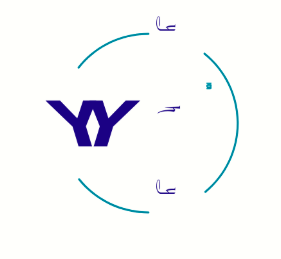Mybatis系列三-动态sql和缓存快速了解
mybatis03-动态SQL
动态sql的出现大大解决了复杂sql的编写和灵活得去运用sql去提高效率。动态sql就是在拼接sql语句,然后组合使用。
搭建环境
先把整个环境搭建
创建数据库

搭建idea环境,编写对应的pojo

@Data
public class Blog {
private String id;
private String title;
private String author;
private Date createTime;
private int views;
}
写dao层的实体类和对应的xml文件
这里写多了一个工具类,是为了生成一个随机的id

//这是BlogMapper接口
package com.yhy.dao;
import com.yhy.pojo.Blog;
public interface BlogMapper {
// 编写添加方法
//往数据库添加信息
int addBlog(Blog blog);
}
BlogMapper.xml
<?xml version="1.0" encoding="UTF-8" ?>
<!DOCTYPE mapper
PUBLIC "-//mybatis.org//DTD Mapper 3.0//EN"
"http://mybatis.org/dtd/mybatis-3-mapper.dtd">
<!--namespace=绑定一个对应的Dao/Mapper接口 原本是写接口,但是现在不用怎么做-->
<mapper namespace="com.yhy.dao.BlogMapper">
<insert id="addBlog" parameterType="blog">
insert into mybatis.blog(id, title, author, create_time, views) values(
#{id},#{title},#{author},#{createTime},#{views});
</insert>
</mapper>
测试
import com.yhy.dao.BlogMapper;
import com.yhy.pojo.Blog;
import com.yhy.utils.IDutils;
import com.yhy.utils.MybatisUtils;
import org.apache.ibatis.session.SqlSession;
import org.junit.Test;
import java.util.Date;
/**
* @Author: yhy
* @Date: 2020/5/19
* @Time: 14:17
*/
public class Mytest {
@Test
public void test(){
SqlSession sqlSession = MybatisUtils.getSqlSession();
BlogMapper mapper = sqlSession.getMapper(BlogMapper.class);
Blog blog = new Blog();
blog.setAuthor("郝老师");
blog.setId(IDutils.getId());
blog.setTitle("web快速入门");
blog.setViews(1000);
blog.setCreateTime(new Date());
mapper.addBlog(blog);
blog.setId(IDutils.getId());
blog.setTitle("Java快速入门");
blog.setCreateTime(new Date());
mapper.addBlog(blog);
blog.setId(IDutils.getId());
blog.setTitle("python快速入门");
blog.setViews(1000);
blog.setCreateTime(new Date());
mapper.addBlog(blog);
sqlSession.close();
}
}
最后结果-成功插入数据库


动态sql实践
其实官网上也讲的很清楚。官网介绍
测试if语句
1、首先接口上的方法定义
//测试使用动态sql
List<Blog> queryBlogIf(Map map);
2、配置文件上写动态sql
<select id="queryBlogIf" parameterType="map" resultType="blog">
select * from mybatis.blog where 1=1
//上面这一行是匹配if没有传入,这用全部查询
<if test="title != null">
and title = #{title}
</if>
<if test="author != null">
and author = #{author}
</if>
</select>
3、最后是测试,查看结果
示例一
@Test
public void queryBlog(){
SqlSession sqlSession = MybatisUtils.getSqlSession();
BlogMapper mapper = sqlSession.getMapper(BlogMapper.class);
//这里是直接传入一个空的map,测试全部查询是什么情况。
HashMap map =new HashMap<>();
List<Blog> blogs = mapper.queryBlogIf(map);
for (Blog blog : blogs) {
System.out.println(blog);
}
sqlSession.close();
}

示例二
@Test
public void queryBlog(){
SqlSession sqlSession = MybatisUtils.getSqlSession();
BlogMapper mapper = sqlSession.getMapper(BlogMapper.class);
HashMap map =new HashMap<>();
//测试动态查询。给出一个title
String tit = "Java快速入门";
map.put("title",tit);
List<Blog> blogs = mapper.queryBlogIf(map);
for (Blog blog : blogs) {
System.out.println(blog);
}
sqlSession.close();
}
结果,正确查出答案。

其他语句

where 元素只会在子元素返回任何内容的情况下才插入 “WHERE” 子句。而且,若子句的开头为 “AND” 或 “OR”,where 元素也会将它们去除。
如果不用where标签,当第一个if不起作用的时候原来的语句就是这样SELECT * FROM BLOG where and..就会报错。
<select id="findActiveBlogLike"
resultType="Blog">
SELECT * FROM BLOG
<where>
<if test="state != null">
state = #{state}
</if>
<if test="title != null">
AND title like #{title}
</if>
<if test="author != null and author.name != null">
AND author_name like #{author.name}
</if>
</where>
</select>
示例-update中的set
使用set标签用来更新数据,同时set 元素会动态地在行首插入 SET 关键字,并会删掉额外的逗号(这些逗号是在使用条件语句给列赋值时引入的)。就是说在写sql的时候,他会自动省略掉逗号等,其实我没有加逗号也是可以运行的。
<update id="updateBlog" parameterType="map">
update mybatis.blog
<set>
<if test="title != null">
title = #{title},
</if>
<if test="author != null">
author = #{author}
</if>
</set>
where id = #{id}
</update>


mybatis04-缓存
前言
缓存是什么?
有分硬件的缓存和软件的缓存。
硬件的是cpu缓存,在cpu和内存之间的临时存储器
软件的常见的有数据库缓存、内存缓存、网络缓存
存在内存中的数据,减少与数据库的直接交互,减少开销,提高效率
缓存的淘汰机制
一级缓存
sqlsession
一级缓存中默认开启,一次session有效
在查询同一个数据的时候,就会启动缓存,但有时涉及增删改,一级缓存就会失效。
二级缓存
二级缓存也叫全局缓存
在使用的时候需要加一个cache标签
步骤
- 开启全局缓存,在setting中设置-
cacheenabled - 在所需的mapper.xml中配置,也可配置缓存的一些参数,自定义参数--比如多久刷新,存的数据大小
- 在会话关闭的时候,一级缓存的数据就会给二级缓存,这样就是使用二级缓存的好处。
只要开启了二级缓存,在同一个mapper下都会有效。
拓展-ehcache
使用广泛的java分布式缓存-自定义缓存,了解一下就可以,可以在maven仓库上找
使用先导包,开启,在mapper中指定。
<cache type=....ehcache>//补全版本使用自己导包
现在主流的都是使用redis了。
总结
-
用户取数据的时候,先是二级缓存,再到一级缓存,再到数据库。
-
一级缓存的会话关闭的时候,一级缓存会存到二级缓存,不过都会有时间限制




 浙公网安备 33010602011771号
浙公网安备 33010602011771号